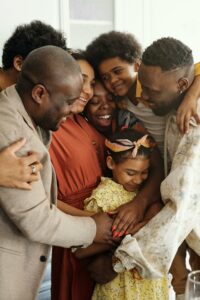In the past few years, the world has been experiencing a baby bust, a severe decrease in birth rates. The decline in births has further intensified following the onset of the COVID-19 pandemic and the health and economic crises it caused. If nothing changes, the world’s population is expected to be halved by the end of this century. A baby bust is a self-compounding phenomenon; if one generation has fewer births, then fewer individuals in the next generation will give birth, rapidly spreading the effects and mindsets that cause the bust. Many factors contribute to the bust: economic uncertainty, delayed marriage, concern for the environmental impacts of a rising population, and a growing emphasis on career pursuits and personal fulfillment. The baby bust provides us with insight into not only the consequences of a global pandemic but also the changing perceptions of marriage, a socially constructed relationship that assumes financial and sexual cooperation between two people, and family, a group of people connected by blood, marriage, adoption, or agreed-upon relationship. Families are socially constructed and historically changing.

The baby bust correlates to the rising portion of American adults who do not want to and may never have children. Forty-four percent of non-parents under the age of 50 say they are unlikely to ever have children. This is a 7 choose not to have children, remaining childfree. There are many reasons behind this choice, but 56 percent claim they simply don’t want kids, believing their lives to be fulfilling without children. This decision has many consequences on individual couples and on the shifting demographics of the world. As fewer children are born, the number of older adults and elderly will begin to outnumber those entering the workforce. This forces governments to make difficult decisions, such as raising the retirement age and placing emphasis on committing more time and energy to work rather than personal endeavors and family, which in turn lowers the motivation to have children and feeds into the baby bust. Additionally, as more and more American adults abstain from having children, the traditional notion of marriage and parenthood as inseparable has given way to a more nuanced understanding of life. Child-free couples are challenging societal expectations and redefining the meaning of family based on personal choices rather than societal norms.
The decrease in desire to have children and raise a traditional family reflects the transformation the American family structure has undergone in the past few decades. The traditional nuclear family, a family consisting of one or more parents and children, was popularized in the 1950s as the embodiment of stability and comfort following the end of the World Wars, and remained the popular ideal for families for many years. However, with the social movements and rapid modernization of the late 20th and early 21st centuries, a more flexible and personalizable idea of what a family could and should be began to develop. With this change, several modern family structures emerged.

Another instance of this shift is the popularization of cohabitation, a residential pattern in which a couple lives together without the benefits of legal marriage, rather than traditional marriage. We all had to isolate ourselves at the start of the COVID-19 pandemic, and many couples were forced to choose between isolating apart or quarantining together, resulting in an increase in cohabitating couples. This had an impact on how these couples navigated their relationships. The pandemic changed the traditional timing of steps taken within relationships and forced couples to assess their expectations and future decision-making. It also showed us new ways of forming bonds with our loved ones, consequentially removing some of the feelings of urgency and necessity towards marriage for young couples. With this change, the number of cohabitating partners who have chosen not to get married has grown. Cohabitating partners have increased from less than 1 percent of all American couples in 1970 to 12 percent in 2023;, while still a relatively small portion of the population, this is a significant increase that reflects the evolving standards for relationships and families.

There are two kinds of family: the family of orientation, the family in which you are raised and socialized due to birth, adoption, or a blended family, and the family of procreation, the family you choose to create through marriage, agreed-upon relationships, or the birth or adoption of children. Since the establishment of the 1950’s nuclear family, both families of orientation and families of procreation have evolved according to the ever-shifting nature of modern society. The rise of child-free and cohabitating couples challenges these traditional notions, expanding the definition to encompass diverse relationships and lifestyles. For instance, since the 1970s, an increasing number of Americans are in interracial marriages, rising from 4 percent to 16 percent of married couples.
For instance, since the 1970s, an increasing number of Americans are in interracial marriages, rising from 4 percent to 16 percent of married couples. Furthermore, in 2021 there were over 700,000 same-sex married couples in the United States, accounting for 1 percent of all married couples. These trends underscore the ongoing transformation of the American family, highlighting its resilience and adaptability to the changing social landscape.
In the wake of the pandemic and the baby bust, social attitudes toward modern family units have evolved to have greater acceptance and recognition of diverse family structures. As a result, individuals feel empowered to make decisions that align with their values and goals, whether or not they include parenthood. These shifts reflect a broader acceptance of various familial arrangements, emphasizing the importance of personal choice in defining familial bonds. This broader understanding of family fosters inclusivity and supports individuals in forming connections based on mutual respect and shared values.
Rasmussen is a guest blogger at UITAC Publishing. UITAC’s mission is to provide high-quality, affordable, and socially responsible online course materials.
Images used in this blog:
- “A Pregnant Woman Rubbing Her Baby Bump” by Pavel Danilyuk is licensed on Pexels. This image has not been altered.
- “Man and Woman Sitting on Chair in Front of Table” by cottonbro studio is licensed on Pexels. This image has not been altered.
- “Family Gathering for a Group Hug” by August de Richelieu is licensed by Pexels. This image has not been altered.




